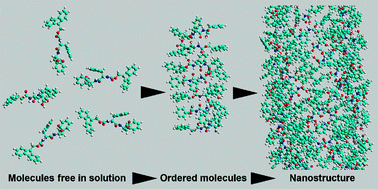Designing peptide based nanomaterials
Abstract
This tutorial review looks at the design rules that allow

* Corresponding authors
a
Manchester Interdisciplinary Biocentre, 131 Princess Street, Manchester, UK
E-mail:
rein.ulijn@manchester.ac.uk
Fax: 0161 3068877
Tel: 0161 306 5986
b
Manchester Interdisciplinary Biocentre, 131 Princess Street, Manchester, UK
E-mail:
Andrew.smith@manchester.ac.uk
Fax: 0161 306 8918
Tel: 0161 306 5161
This tutorial review looks at the design rules that allow

 Please wait while we load your content...
Something went wrong. Try again?
Please wait while we load your content...
Something went wrong. Try again?
R. V. Ulijn and A. M. Smith, Chem. Soc. Rev., 2008, 37, 664 DOI: 10.1039/B609047H
To request permission to reproduce material from this article, please go to the Copyright Clearance Center request page.
If you are an author contributing to an RSC publication, you do not need to request permission provided correct acknowledgement is given.
If you are the author of this article, you do not need to request permission to reproduce figures and diagrams provided correct acknowledgement is given. If you want to reproduce the whole article in a third-party publication (excluding your thesis/dissertation for which permission is not required) please go to the Copyright Clearance Center request page.
Read more about how to correctly acknowledge RSC content.
 Fetching data from CrossRef.
Fetching data from CrossRef.
This may take some time to load.
Loading related content
